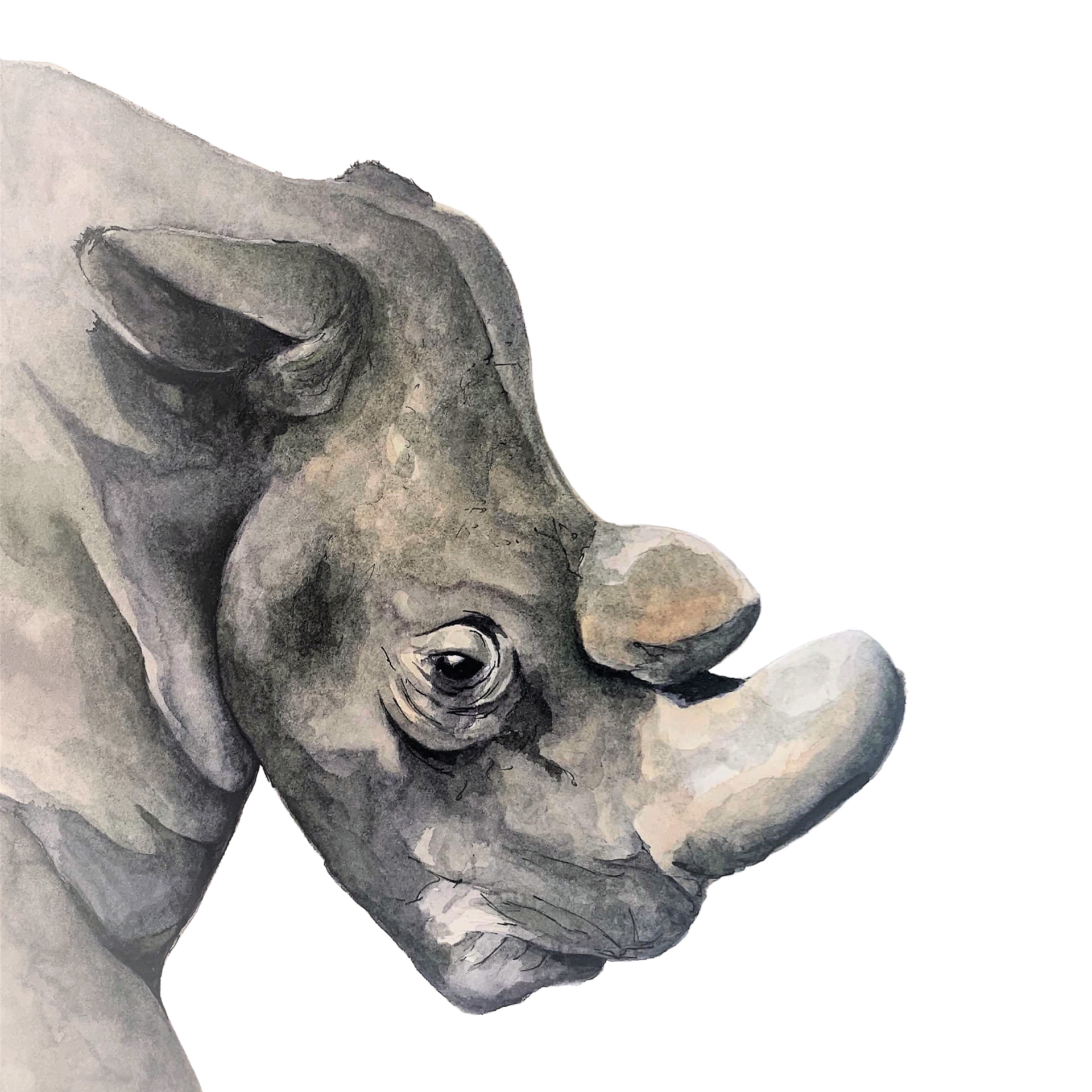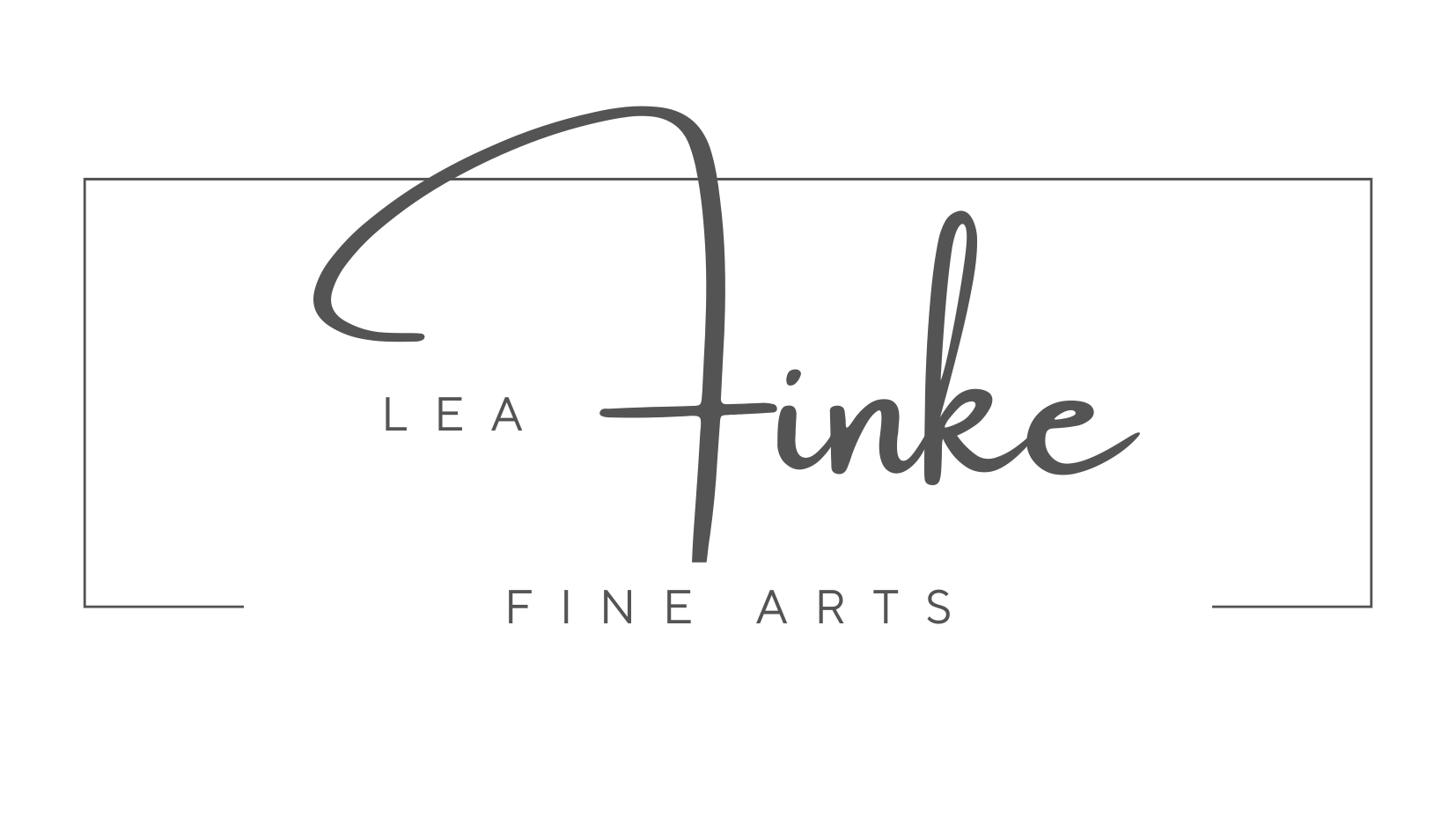The Northern White Rhino is the rarest mammal in the world. There are only 2 left!
That’s right, only 2 living northern rhinos left in the entire world – Najin, and Fatu, both female. My watercolor shows Sudan. He was the father, or grandfather, of the two and the last male of his species. He died in 2018, but scientists are still trying to save the almost extinct species.
- Watercolor and ink
- 30×30 Sennelier watercolor paper satin 300g/m²
When I first heard about the last two remaining representatives of their species, it touched me very much. The thought of painting this majestic animal has occupied me ever since. Now I finally had the opportunity. Watercolor is one of my favorite media, for this picture I found it particularly suitable. Because I find that the translucent, the fleeting of the material well symbolizes the disappearance of this species from our planet.
I have chosen to paint Sudan and not Najin or Fatu. The reason for this is that it is possible thanks to Sudan that the species can be saved from extinction after all. As the last male northern white rhino, Sudan got his own Tinder profile as the most eligible bachelor in 2017.
The aim was not only to draw attention to the problematic situation, but above all to call for donations. And indeed, around 85,000 USD was collected. This money will be used to breed northern white rhino calves through in vitro fertilization after all.
Civil wars, poaching, and greed were the reasons for the extinction of the Northern White Rhino. In 2008, not a single animal could be detected in Garamba National Park, the last distribution area. Therefore, they were officially declared extinct in the wild in 2009. At that time, only 8 northern white rhinos were still alive. 2 in a zoo in San Diego and 6 in a zoo in the Czech Republic.

Fatu’s birth was the last of a northern white rhino. Like many other genera, rhinos reproduce poorly in captivity. Hoping that offspring would do better in a private reserve in Africa, 4 of the last 8 northern white rhinos were moved to Ol Pejeta Conservancy, 130 kilometers north of Nairobi.
The two bulls Sudan and Suni, as well as the two females Najin and Fatu were guarded by 40 armed rangers and gamekeepers around the clock from now on.
Although the animals mated, the hopes were unfortunately not fulfilled. No more rhino calves were born. And when Sudan had to be euthanized for health reasons in 2018, he was survived only by his daughter Najin and granddaughter Fatu. Since then, the species has been considered “functionally extinct” because the two females can no longer reproduce naturally.
- The white rhinoceros is the third-largest land animal on earth.
- The wide mouth is an adaptation that helps them graze blades of grass directly above the ground
- One kilogram of rhino horn now costs 55,000 euros, making it more expensive than gold.
Through the money raised thanks to Sudan and with collected eggs and sperm, several embryos could already be bred. These are to be carried out in the near future by females of the southern white rhinoceros. Although the outcome is still uncertain and time is short, there is still hope to bring the species back from extinction.
This is not only important to preserve this majestic, unique and beautiful animal for future generations. Every species has a significant task in the ecosystem. If it disappears, it leaves a gap. No species is simply dispensable.
Help to protect the rhinos
Rhinos are some few survivors from prehistoric times. Once they populated large areas of land. Even in Europe, they were native. Of the only 4 remaining genera with 5 species, the northern white rhino is the only one on the verge of extinction, but they are all endangered. If there were several hundreds of thousands of rhinos before the beginning of the 19th century, today there are only about 30,000.
Like other rhinos, northern white rhinos are landscape architects. By cutting back plant growth, they make it easier for smaller mammals to feed. They disperse seeds with their droppings and feed insects. They create areas of varying vegetation height, thereby preventing the spread of brush fires. No other species can replace them.
